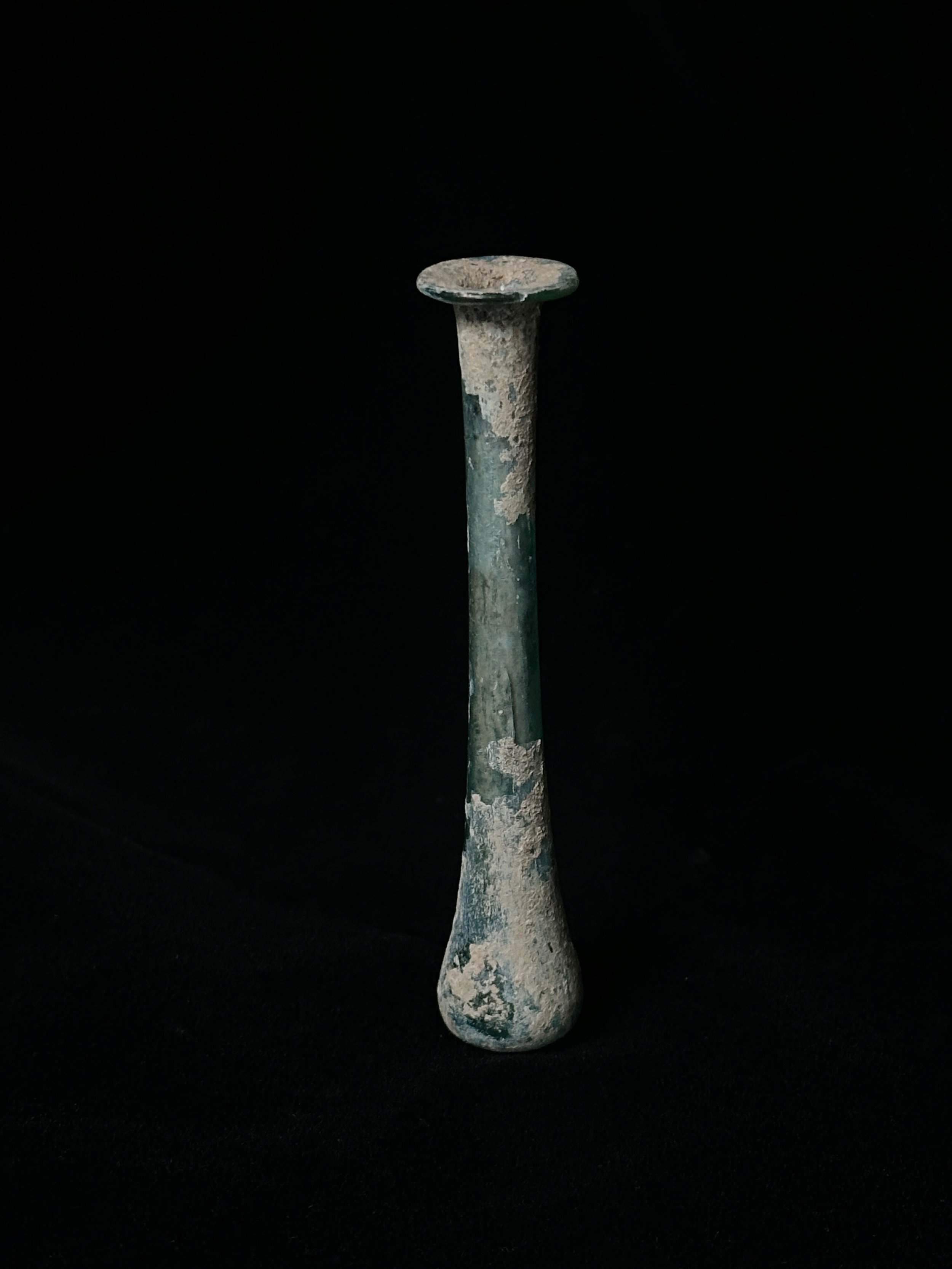 Image 1 of 4
Image 1 of 4

 Image 2 of 4
Image 2 of 4

 Image 3 of 4
Image 3 of 4

 Image 4 of 4
Image 4 of 4





unearthed Roman Glass Unguentarium
1st–4th century A.D.
A slender Roman unguentarium, its long neck flaring softly into a rounded rim and tapering to a domed base. The surface holds traces of mineral deposits and light encrustation, echoing centuries spent underground. Its sea-glass hue is characteristic of ancient Roman glass, shifting from translucent to opaque as light catches its buried history.
Vessels like this once held oils or perfumes, their forms designed for the intimate scale of daily ritual — a drop at a time. Today, it reads more like a minimal sculpture, a study in time-softened form.
Measurements: Approx. 4 3/4 in (12.1 cm)
Material: Blown glass
Origin: Roman Empire
Condition: As found. Mineral deposits, weathering, and partial encrustation. No major structural flaws.
Provenance:
Acquired from Ancient & Oriental (UK), 1980s–1990s. From the Ian Wilkinson collection, Nottinghamshire, UK — formed since 1985.
1st–4th century A.D.
A slender Roman unguentarium, its long neck flaring softly into a rounded rim and tapering to a domed base. The surface holds traces of mineral deposits and light encrustation, echoing centuries spent underground. Its sea-glass hue is characteristic of ancient Roman glass, shifting from translucent to opaque as light catches its buried history.
Vessels like this once held oils or perfumes, their forms designed for the intimate scale of daily ritual — a drop at a time. Today, it reads more like a minimal sculpture, a study in time-softened form.
Measurements: Approx. 4 3/4 in (12.1 cm)
Material: Blown glass
Origin: Roman Empire
Condition: As found. Mineral deposits, weathering, and partial encrustation. No major structural flaws.
Provenance:
Acquired from Ancient & Oriental (UK), 1980s–1990s. From the Ian Wilkinson collection, Nottinghamshire, UK — formed since 1985.
1st–4th century A.D.
A slender Roman unguentarium, its long neck flaring softly into a rounded rim and tapering to a domed base. The surface holds traces of mineral deposits and light encrustation, echoing centuries spent underground. Its sea-glass hue is characteristic of ancient Roman glass, shifting from translucent to opaque as light catches its buried history.
Vessels like this once held oils or perfumes, their forms designed for the intimate scale of daily ritual — a drop at a time. Today, it reads more like a minimal sculpture, a study in time-softened form.
Measurements: Approx. 4 3/4 in (12.1 cm)
Material: Blown glass
Origin: Roman Empire
Condition: As found. Mineral deposits, weathering, and partial encrustation. No major structural flaws.
Provenance:
Acquired from Ancient & Oriental (UK), 1980s–1990s. From the Ian Wilkinson collection, Nottinghamshire, UK — formed since 1985.

